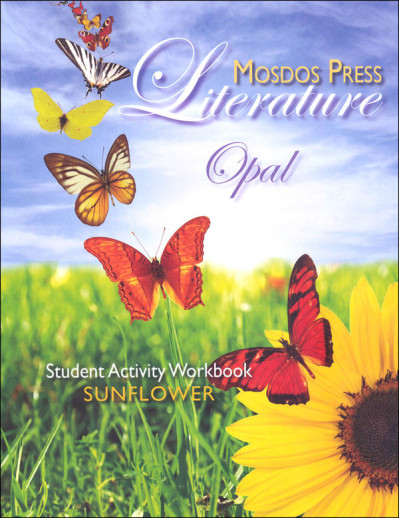We use cookies to make your experience better. To comply with the new e-Privacy directive, we need to ask for your consent to set the cookies. Learn more.
Opal Student Workbook
- Activities include vocabulary, language arts, graphic organizers, and more!
- Word games and puzzles
- Aligns to Common Core Standards
- Neutral program with positive moral values
Don’t
be alarmed by the cover! The back cover is not upside down, you just need to
flip it and it will be the beginning of the second half of the year. Sunflower
side (Units 1-3) is the first semester and Daisy side (Units 4-6) is the second
semester. The Student Workbook will have six pages for each main story. The
activities will include:
Vocabulary – Activity One – Introduces vocabulary words from the story.
You will fill in the blank the correct vocabulary word with the appropriate
sentence example. Definitions to the vocabulary words are found in the
glossary.
Vocabulary – Activity Two – Offers students the opportunity to think creatively and logically with varying activities.
Language Arts Activity – Activities are created to help students recognize the narrative elements, explore point of view, understand figurative language, and make predictions that will reinforce the skills taught in the textbook.
More About the Story Activity – This page offers young writers a creative writing experience with a thoughtful prompt linked to the selection.
Graphic Organizer – This activity helps your student visually process information of the knowledge they have already acquired from working on questions and activities related to the selection.
The answers to the workbook are found in each of the Teacher Editions.
Workbook is consumable with some color. 196 pages.
The Opal workbook color graphics are appealing, and the layout provides sufficient space between lines and exercises for the younger student writer. Opal has vocabulary exercises in the form of word games and puzzles. With this engaging workbook students see that language activities can be fun. In addition to two vocabulary activities for each prose selection, the workbook includes language arts skills activities, writing activities, and a graphic organizer. The six workbook pages corresponding to each selection assist the third grader in developing analytical and writing skills. The Workbook Answer Guide is included in the Teacher's Edition.
Visually appealing Texts are organized by story elements and include author biographies, vocabulary, footnotes, and “Blueprints for Reading” to encourage analytical skills. The consumable Workbooks include vocabulary activities, comprehension questions, writing activities, and graphic organizers. The comprehensive Teacher’s Editions (two volumes at this level) contain reduced student pages, background teaching information, discussion questions with answers, answers to the questions found at the end of each selection, answers to workbook questions, and creative writing assignment pointers. Effective use of the course requires Textbooks, Workbook, and Teacher’s Editions which are conveniently available in the Homeschool Bundle.


Simply the best literature program out there.
extra book for additional child
This is one of the few workbooks that teaches children to appreciate literature and understand story and narrative structure.
I needed a student workbook for a second child and wanted to make sure I had it when needed.